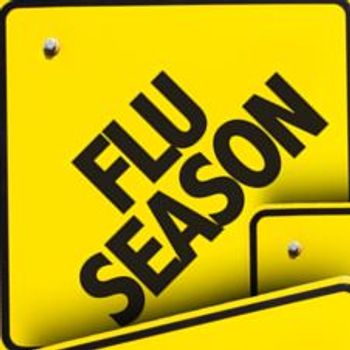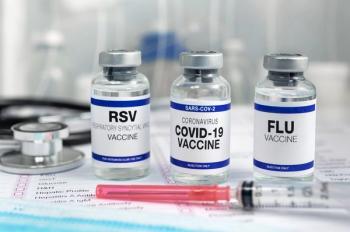
Importance Of The Inclusion Of Multiple Viral Strains Within Vaccines
Dr Wendy Wright reviews the differences between influenza strains and the rationale for the inclusion of multiple viral strains within flu vaccines.
Episodes in this series

John Russell, MD, FAAFP: So, Wendy, I’m going to turn to you, and we're talking about strains. So, really, the first question we used to have a trivalent, now we have a quadrivalent. Can you just simply explain that for our audience so we can explain it simply to our patients?
Wendy Wright, DNP, ANP-BC, FNP-BC, FAANP, FAAN, FNAP: Well, many of us that are on this program have been around long enough to remember that trivalent, right, which contained 2 of the A strains and 1 of the B. But I think in the last 10 years before we moved into a quadrivalent, which generally contains 2 A's and 2 B strains, there was a significant mismatch, particularly in the area of the B strains. And, in fact, I remember reading that in the 10 years leading up to when we switched over to the quadrivalent about 50% of the years, there was a significant mismatch in the B. Generally, the A tends to occur earlier in the season. There's a little bit more antigenic drifting that occurs with the A. The B tends to be a little bit later in the season. And one could argue that in some of the literature, the B produces more significant disease in children who are infected. So having that 2 and 2 – 2 A's and 2 B's – hopefully gives us a better ability to match with the strains that are out there circulating. There is a big discussion this year, I know, in members of some of the advisory boards. Are we going to go back to not using the quadrivalent, but maybe go back to a trivalent and not exposing people to spring protection that they don't necessarily need? So, it's a pretty interesting conversation and it's a real evolution in how we approach flu vaccination.
John Russell, MD, FAAFP; So, JAM, do you have any thoughts along this kind of strain-wise?
Jacinda Abdul-Mutakabbir, PharmD, MPH, AAHIVP:Right. So, Wendy, I think you did such a phenomenal job really explaining that. And in my opinion, I'm so happy to see this switch to quadrivalent vaccines. And I don't know, maybe it's just my own enthusiasm, but even going back to what Neil stated about just the amazing vaccine technology that we have and really the recombinant vaccine, because we're actually taking that surface of the most potent area of that particular flu type virus and really using just that and having that build up in cells. And we're able to use, like, this really pure form of the viruses. So, I think that with the quadrivalent, we're really moving forward to having just these really active vaccines and these really well-matched vaccines to whatever it is that we may see. And I think by having this quadrivalent aspect of it, though, we end up in this place where we're where we can better account for maybe those problems, strains that arise like the H1N1 [virus] that we maybe didn't think were so serious at the beginning of the flu season. So, I think that moving this way with the quadrivalent is honestly a testament to science really moving with the times and adjusting or maybe being more forward-thinking about what it is that may come. We have to consider that after COVID-19, we really saw a change of how viruses look, because now folks are not masking. Now we don't have the social distancing. Because when we did have that, those viruses were able to go ahead, they were able to mature, they were able to change themselves. And they look so much different than what we imagined them to look or what we remembered them 30 years prior, as Wendy stated, and so many other folks stated throughout their practice. So, I think the more we have and the better technology we have, the better we’ll be for the future. And [what] it is that flu season may continue to look like.
John Russell, MD, FAAFP: So, Chuck, as someone who has a great interest in the study of viruses, Yamagata kind of disappeared with COVID-19 a little bit, didn’t it?
Charles Vega, MD, FAAFP: Right. Yeah. So, we definitely see a difference, as JAM and yourself are saying, you're absolutely right. And so, it's something that I think that this is still an evolving story as we emerge from COVID-19. And, so, I think that everybody who's seeing patients needs to be aware and as local as you can, what's going on with flu in your area. I would also state that…whatever flu vaccine is available, it’s better to be vaccinated versus not vaccinated. So, especially if there happens to be some kind of deficit or flu vaccine available, just use what you have is always better. Yeah, but there are some differences. And we know that, you know, particularly for [elderly] folks, for example, the high dose or adjuvanted vaccines are preferred because they're more effective for folks with, likely presumed, a weaker immune system. There's some evidence that the cell-based vaccine does have advantages. Neil did a great job talking about production and potential real catastrophes that could happen with it with egg-based vaccine production. But it may actually have some advantage as well over, say, an H3N2 strain in terms of a recombinant vaccine versus an egg-based vaccine. So, there is a lot of new information coming out. I think it's really exciting. Vaccines are advancing forward. And I always remind patients, yes, we're using a lot more vaccines, but the amount of actual products, which are the vaccines you're receiving now across the board, not just influenza, are a lot more pure than these. They're using a lot less preservatives, a lot less adjuvants. And so therefore, you're actually getting less elements or less chemicals associated with those vaccines, but much, much greater protection. And that's the real upside here.
Transcript is AI-generated and edited for clarity and readability.
Newsletter
Enhance your clinical practice with the Patient Care newsletter, offering the latest evidence-based guidelines, diagnostic insights, and treatment strategies for primary care physicians.






















































































































































































































































































